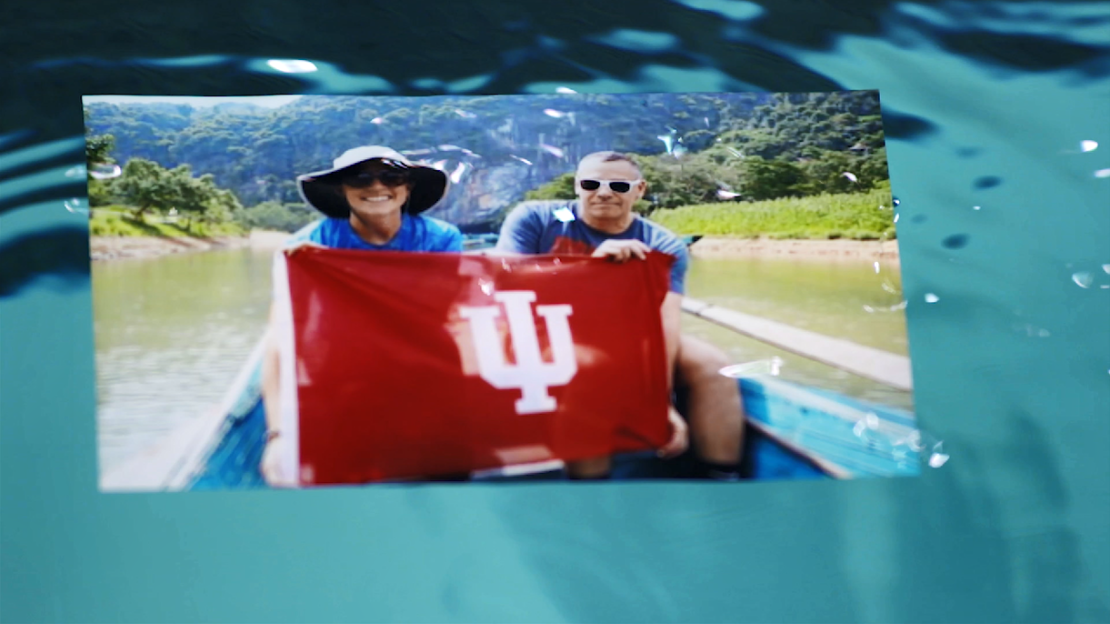John Tolley, February 24, 2018
Vietnam is intrinsically linked to the water. From H? Long Bay to the Mekong Delta, the nation?s coastline stretches over 2,000 miles along the Gulf of Tonkin and the South China Sea. Inland, rivers such as the ??ng Nai, the Han, and the Ti?n snake through the countryside and supply water to flood the rice paddies that dot the rural landscape.
Yet, despite the abundance of access that the Vietnamese have to water, they have one of the highest rates of youth drowning anywhere in the world. This fact struck Indiana University alum Beth Kreitl, who visited the country alongside her husband as volunteers for the organization Swim for Life Vietnam.
?There?s about 32 children a day that die from drowning,? says Kreitl. ?People use the water to travel to and from work and school. There?s also a big fishing industry and there are rice paddies, but there isn?t the infrastructure to teach children how to swim.?
During her stay in Vietnam, Kreitl led swimming lessons for nearly four hundred students. She also worked with physical education teachers and pool supervisors from across Vietnam, teaching them how to teach swimming. Through this ?train the trainer? model, the organization is able to increase their impact exponentially.
?When children learn how to swim, it?s very empowering,? Kreitl notes. ?It?s part of health, it?s part of recreation and connecting with friends. So, I?d love for them to be able to swim and not have that risk of drowning be so high.?
After she returned to the US, Kreitl began to look for a way to connect her work in Vietnam with her alma mater, which has a produced a long line of champion swimmers and has had a tremendous impact on the prevalence of aquatic sports across the state of Indiana. She was soon connected with Dr. Bill Ramos, an assistant professor in the School of Public Health and Director of the IU Aquatics Institute, whose mandate is to research how natural and built aquatic environments impact public health in a positive way.
?Beth had seen some of the work that [the Aquatic Institute] had done in the US with the Red Cross,? Ramos recalls. ?I think she was prepared to have to sell me, and within probably 60 seconds, I said, ?I?m on board; this is exactly what we need to be doing.??
The partnership between Indiana, Swim for Life Vietnam and We Bloom, a non-profit organization Kreitl founded and leads, has led to an expansion of drowning prevention initiatives across Vietnam. To date, they have taught well over 5,000 children how to swim and over 72,000 kids and instructors how to be safe around water and how to perform rescues.
?We have two types of programs,? Ramos explains. ?One is Water Safety Education, which is a classroom-based program where we go into schools and train physical education teachers and any other teacher who is interested in how to deliver this information about water safety. The other is the Learn to Swim program where we are actually teaching children how to swim.?
Moving forward, Indiana and the non-governmental agencies they?ve partnered with are working alongside the Vietnamese government to create a standardized curriculum and certification program for swimming instructors.
?I care about saving lives,? says Kreitl. ?The thing I am most sure about is that drowning is an enormous problem, but it is one that we can absolutely do something about. This is a preventable problem.?







